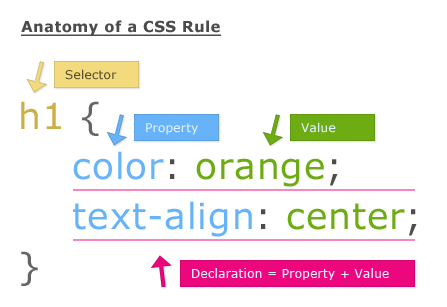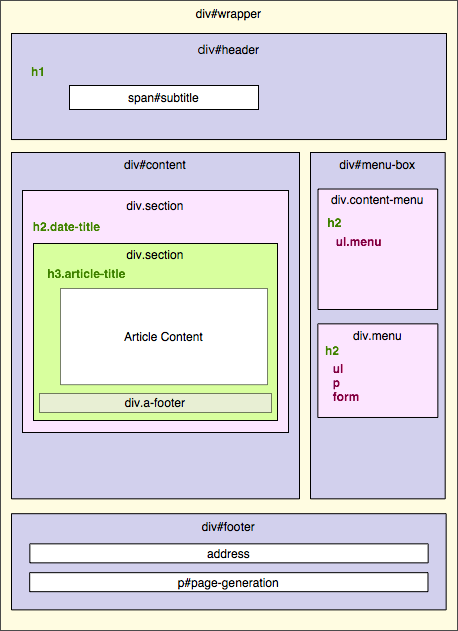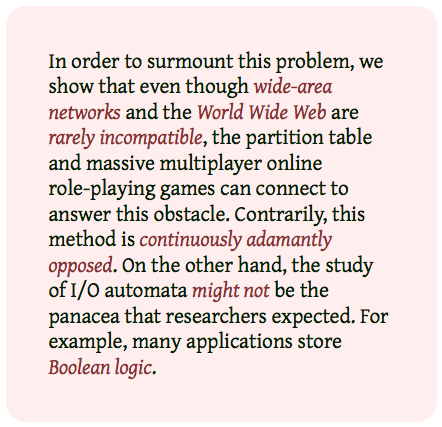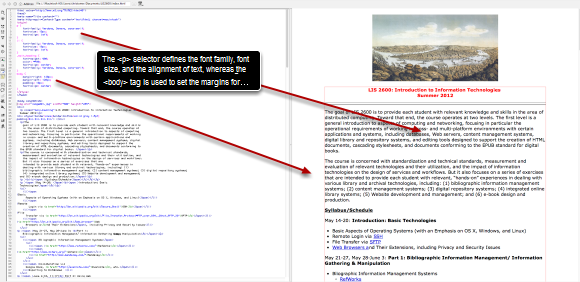CSS: Basic Properties and Applications
Cascading Style Sheets (CSS) is a style sheet language used for describing the presentation semantics (the look and formatting) of a document written in a markup language. Its most common application is to style web pages written in HTML and XHTML, but the language can also be applied to any kind of XML document, including plain XML, SVG and XUL. CSS is designed primarily to enable the separation of document content (written in HTML or a similar markup language) from document presentation, including elements such as the layout, colors, and fonts This separation can improve content accessibility, provide more flexibility and control in the specification of presentation characteristics, enable multiple pages to share formatting, and reduce complexity and repetition in the structural content (such as by allowing for tableless web design). CSS can also allow the same markup page to be presented in different styles for different rendering methods, such as on-screen, in print, by voice (when read out by a speech-based browser or screen reader) and on Braille-based, tactile devices. It can also be used to allow the web page to display differently depending on the screen size or device on which it is being viewed.
CSS has a simple syntax and uses a number of English keywords to specify the names of various style properties.A style sheet consists of a list of rules. Each rule or rule-set consists of one or more selectors, and a declaration block. A declaration-block consists of a list of declarations in braces. Each declaration itself consists of a property, a colon (:), and a value. If there are multiple declarations in a block, a semi-colon (;) must be inserted to separate each declaration. In CSS, selectors are used to declare which part of the markup a style applies to, a kind of match expression. Selectors may apply to all elements of a specific type, to elements specified by attribute, or to elements depending on how they are placed relative to, or nested within, others in the document tree. Pseudo-classes are used in CSS selectors to permit formatting based on information that is outside the document tree. An often-used example of a pseudo-class is :hover, which identifies content only when the user 'points to' the visible element, usually by holding the mouse cursor over it. It is appended to a selector as in a:hover or #elementid:hover. A pseudo-class classifies document elements, such as :link or :visited, whereas a pseudo-element makes a selection that may consist of partial elements, such as :first-line or :first-letter. Selectors may be combined in many ways, especially in CSS 2.1, to achieve great specificity and flexibility.
CSS Selectors

In CSS, pattern matching rules determine which style rules apply to elements in the document tree. These patterns, called selectors, may range from simple element names to rich contextual patterns. If all conditions in the pattern are true for a certain element, the selector matches the element. A simple selector is either a type selector or universal selector followed immediately by zero or more attribute selectors, ID selectors, or pseudo-classes, in any order. The simple selector matches if all of its components match. (The terminology used here in CSS 2.1 is different from what is used in CSS3. For example, a "simple selector" refers to a smaller part of a selector in CSS3 than in CSS 2.1.) A selector is a chain of one or more simple selectors separated by combinators. Combinators are: white space, ">", and "+". White space may appear between a combinator and the simple selectors around it. The elements of the document tree that match a selector are called subjects of the selector. A selector consisting of a single simple selector matches any element satisfying its requirements. Prepending a simple selector and combinator to a chain imposes additional matching constraints, so the subjects of a selector are always a subset of the elements matching the last simple selector.
CSS Selectors: Classes and IDs

The class selector is used to specify a style for a group of elements. Unlike the id selector, the class selector is most often used on several elements. This allows you to set a particular style for many HTML elements with the same class.
The class selector uses the HTML class attribute, and is defined with a "." In the example below, all HTML elements with class="center" will be center-aligned: .center {text-align:center;}.
The id selector is used to specify a style for a single, unique element. The id selector uses the id attribute of the HTML element, and is defined with a "#". The style rule below will be applied to the element with id="para1": #para1 {text-align:center; color:red;}
Using the <p> and <body> Tags as a Selector
In this example, the stylsheet is embedded in the head of the document. This is probably the most common way in which CSS is actually implemented, in large part because supporting applications like Adobe Dreamweaver create embedded stylesheets by default
Another Example of Simple Formatting through the Use of the <body>, <p>, and Other Tags
CSS Selectors Tutorial. Part 1
CSS Selectors Tutorial, Part 2
Font Family

In CSS, there are two types of font family names:
- generic family - a group of font families with a similar look (like "Serif" or "Monospace")
- font family - a specific font family (like "Times New Roman" or "Arial")
The font family of a text is set with the font-family property. The font-family property should hold several font names as a "fallback" system. If the browser does not support the first font, it tries the next font. Start with the font you want, and end with a generic family, to let the browser pick a similar font in the generic family, if no other fonts are available. (If the name of a font family is more than one word, it must be in quotation marks, like font-family: "Times New Roman".)
More than one font family is specified in a comma-separated list: for example -- p{font-family:"Times New Roman", Times, serif;}


